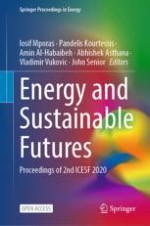9.1 Introduction
9.2 Research Method
-
The impact of forecasting range on model accuracy, from one day to one month predictions into the future.
-
The impact of segmenting the data along the lines of week days and week ends, creating independent prediction models for both, on the accuracy of said models compared with the base model.
-
The impact of segmenting the data along the lines of active building periods and inactive periods, creating independent prediction models for both, on the accuracy of said models compared with the base model.
-
The first month of each season, is placed into a season specific training data set.
-
The second month of each season, is used to create three data sets that are to be used for prediction purposes, containing the first day, week and entirely of the month.
-
Building active and inactive periods, where in separate models are created for the 8:00 am to 18:00 pm active period and the 18:15 pm to 7:45 am period of the data set.
-
Weekdays and weekends, where in separate models are created for the Monday to Friday period and the Saturday to Sunday period of the data set.
9.3 Results and Discussion
9.3.1 Daily, Weekly and Monthly Control Building Energy Predictions
9.3.2 Segmented Monthly Building Energy Usage Predictions
9.4 The Conclusion
-
The exploration of the data of the Clarendon building’s specific meter energy consumption over the course of the year period, to observe how each building element’s consumption changes over time.
-
The comparison of the building energy model based upon the summated building energy use, with the summated predicted energy use of a set of models based upon each electric meter individually.
-
The direct comparison of these results with the results of using the same datasets to train other learning machines previously mentioned.
